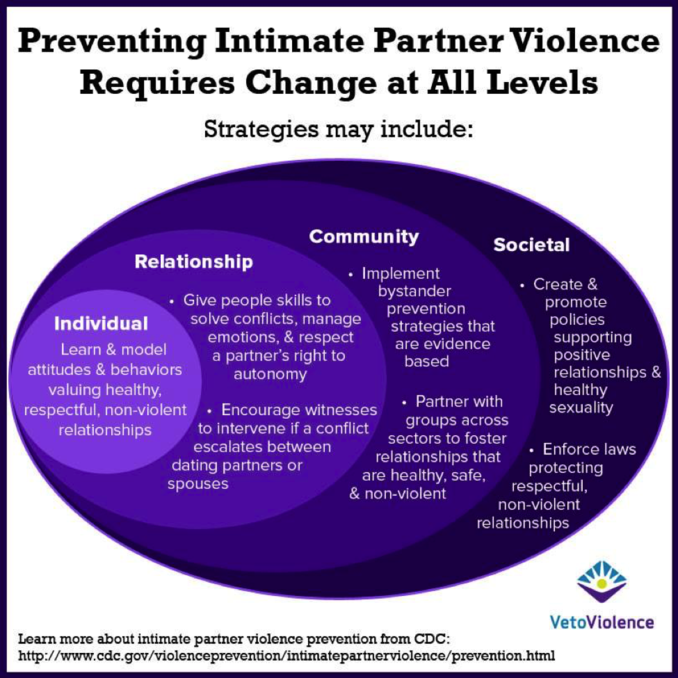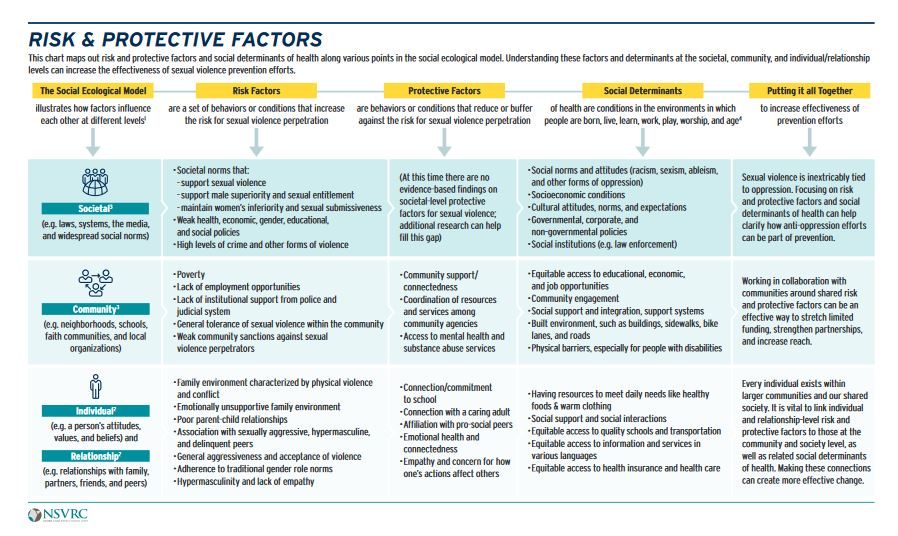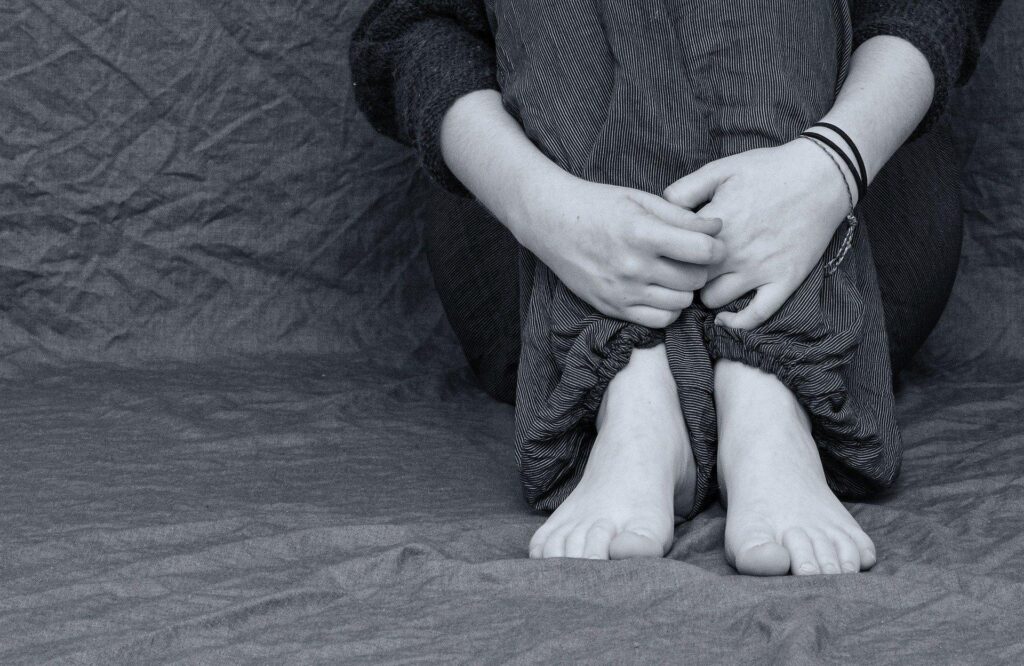Prevention & Community Education
Day One engages in training, education, community organizing, systems advocacy, and resource development in order to prevent sexual violence.
Primary prevention efforts address the root causes of sexual violence, including:
- social norms that promote or permit sexual violence, for example, the objectification of women, gender stereotyping, sexism, and toxic masculinity
- environments that support violence and are not protective of the people within them,
- and health inequity, including poverty, discrimination, lack of equitable access to basic needs, education, and health services
Risk & Protective Factors
The National Sexual Violence Resource Center offers a chart that maps out risk and protective factors and social determinants of health along various points in the social ecological model. Understanding these factors and determinants at the societal, community, and individual/relationship levels can increase the effectiveness of sexual violence prevention efforts.
Check out the full Risk & Protective Factors chart on the NRVRC website to learn more about protective factors and social determinants.
Spectrum of Prevention
The six levels of intervention fosters the belief that prevention is much more than education alone. The Spectrum serves as a systematic tool that offers prevention activities. Read the summary, or access the entire Spectrum of Prevention to learn more.
Public health classifies prevention into three levels:
- Primary prevention approaches aim to stop sexual violence before it occurs; preventing initial perpetration.
- Secondary prevention approaches are immediate responses to sexual violence to deal with short-term consequences.
- Tertiary prevention approaches are long-term responses to sexual violence to deal with lasting consequences.

Social Ecological Model
Our prevention efforts are shaped using the social ecological model in order to address sexual violence at multiple levels. For more information, visit https://www.cdc.gov/violence-prevention/about/index.html

National Prevention Resources
Center for Disease Control: VetoViolence
Access prevention information and view tools to understand your role in preventing violence. VetoViolence offers training resources and opportunities to get involved in your community.
Prevent Connect
This national project of the California Coalition Against Sexual Assault (CASA) offers online media to connect people around prevention. To “engage communities in preventing sexual assault and relationship violence,” the project aims to advance primary prevention in collaboration with the U.S. Centers for Disease Control and Prevention (CDC), National Center for Injury Prevention, and RALIANCE.
National Sexual Violence Resource Center
“The National Sexual Violence Resource Center (NSVRC) is the leading nonprofit in providing information and tools to prevent and respond to sexual violence.” NSVRC provides vital resources including research, best practices, and statistics. Each year in April, NSVRC launches Sexual Assault Awareness Month (SAAM) to educate and engage the public in different topics related to sexual assault prevention.



